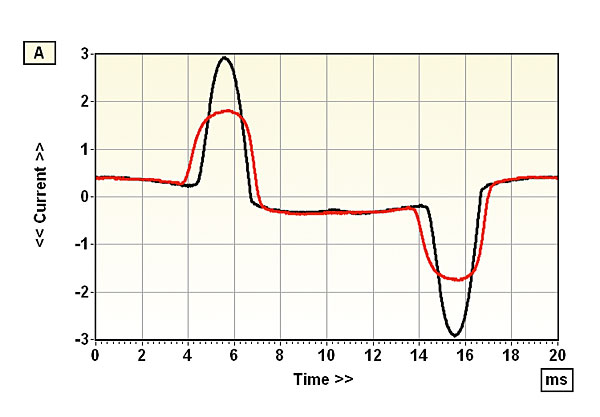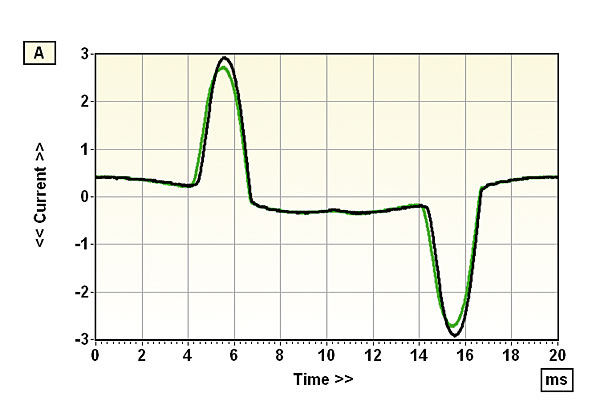PS Audio Stellar Power Plant 3 Mains Regenerator Lab Report
As the testing of mains regenerators isn't a standard procedure, I've built some special equipment to facilitate it. The first uses an inline Hall-effect current transducer from LEM Components that can record currents of up to 80A at slew rates >60A/µs over a bandwidth >100kHz, while adding a series resistance of only 0.18mohm. Built into a box with flying leads terminated in a mains plug at one side and a mains socket at the other, it can be inserted into any component's mains feed to measure charging current. Shown here are charging current waveforms from the wall socket and from the SPP3 [see Graph 1], and comparing sine with MultiWave output [Graph 2], using an old Exposure XVIII Mono power amp delivering 25W/4ohm. The SPP3's current pulses are almost textbook whereas those from the wall socket have a lower peak value and longer duration as a consequence of the mains waveform being flat-topped and from a higher source resistance. Note that MultiWave does increase the charging time slightly as claimed – but not, in this case, by a lot.
For measurement of regenerator distortion I've built a resistive attenuator that feeds a low-noise, low-distortion instrumentation amplifier. Together these give a voltage output one-hundredth that of the difference between the live and neutral lines, with much lower inherent distortion than a transformer-based solution. But a persistent mains tripping problem that occurred whenever this attenuator box was fitted to the SPP3 prevented waveform distortion being recorded and I was unable to resolve it before this issue went to press. Whether this occurred due to recent changes to the consumer unit and RCDs in my home or because of some characteristic of the SPP3 is unclear. It was not an issue when I measured the P20 [HFN Apr '19] and, importantly, did not also reoccur when I plugged the voltage attenuator into my legacy P10 [HFN Apr '13].
However, while investigating the cause, I discovered an issue with the P10 and SPP3 I haven't seen commented on previously: in UK form (at least) their live and neutral feeds are reversed. This was verified with both a multimeter and a Fluke SM100 socket tester. While this won't affect the operation of equipment connected to the regenerator it could constitute a safety hazard with older equipment having a single-pole on/off switch in the live feed should anyone delve inside assuming that dangerous voltages are not present as a result of the power switch being off. Always heed the standard advice: remove equipment entirely from the mains supply before ever venturing inside it. We have asked PS Audio to comment on this. KH


Price: £2310























































